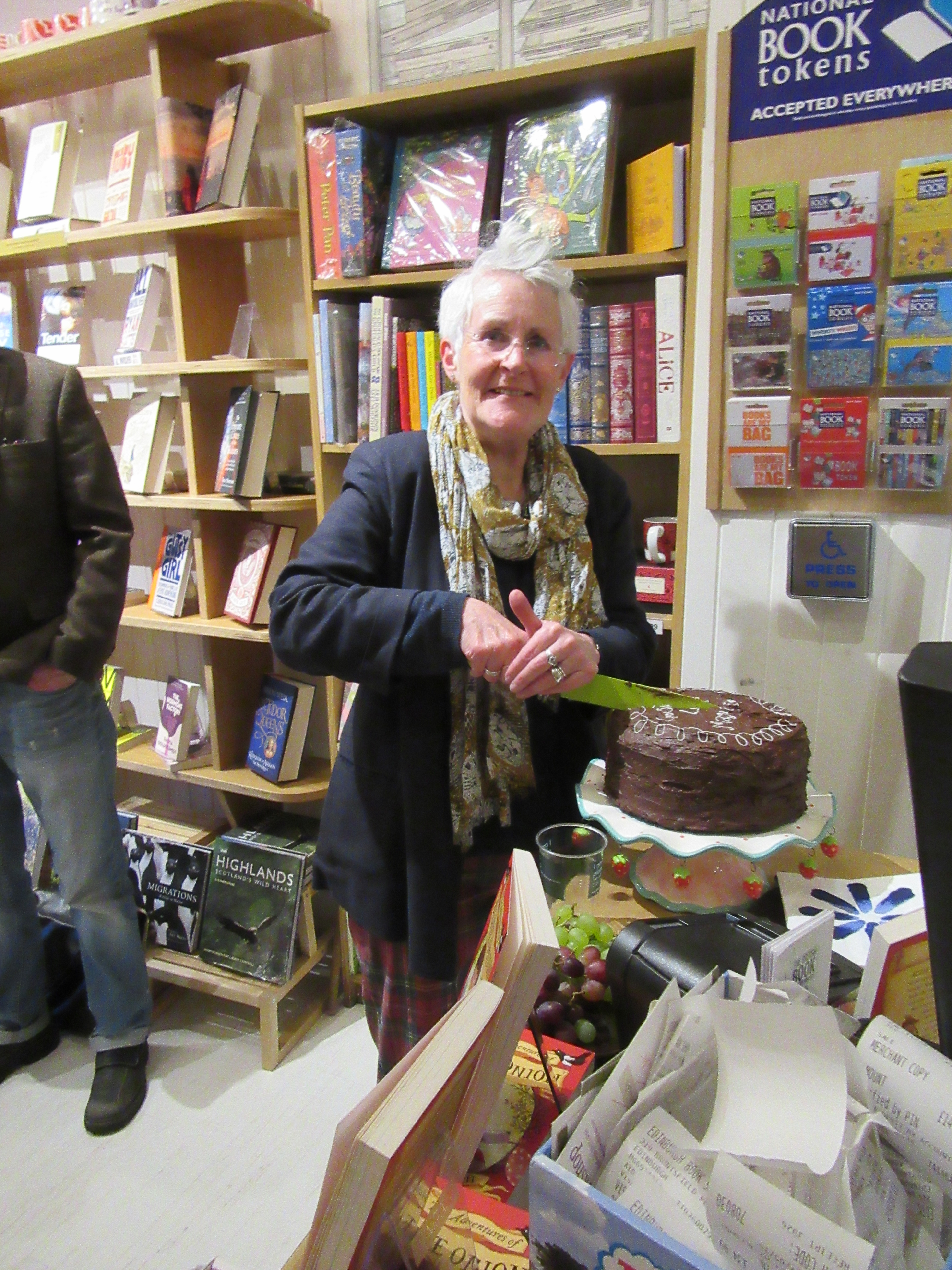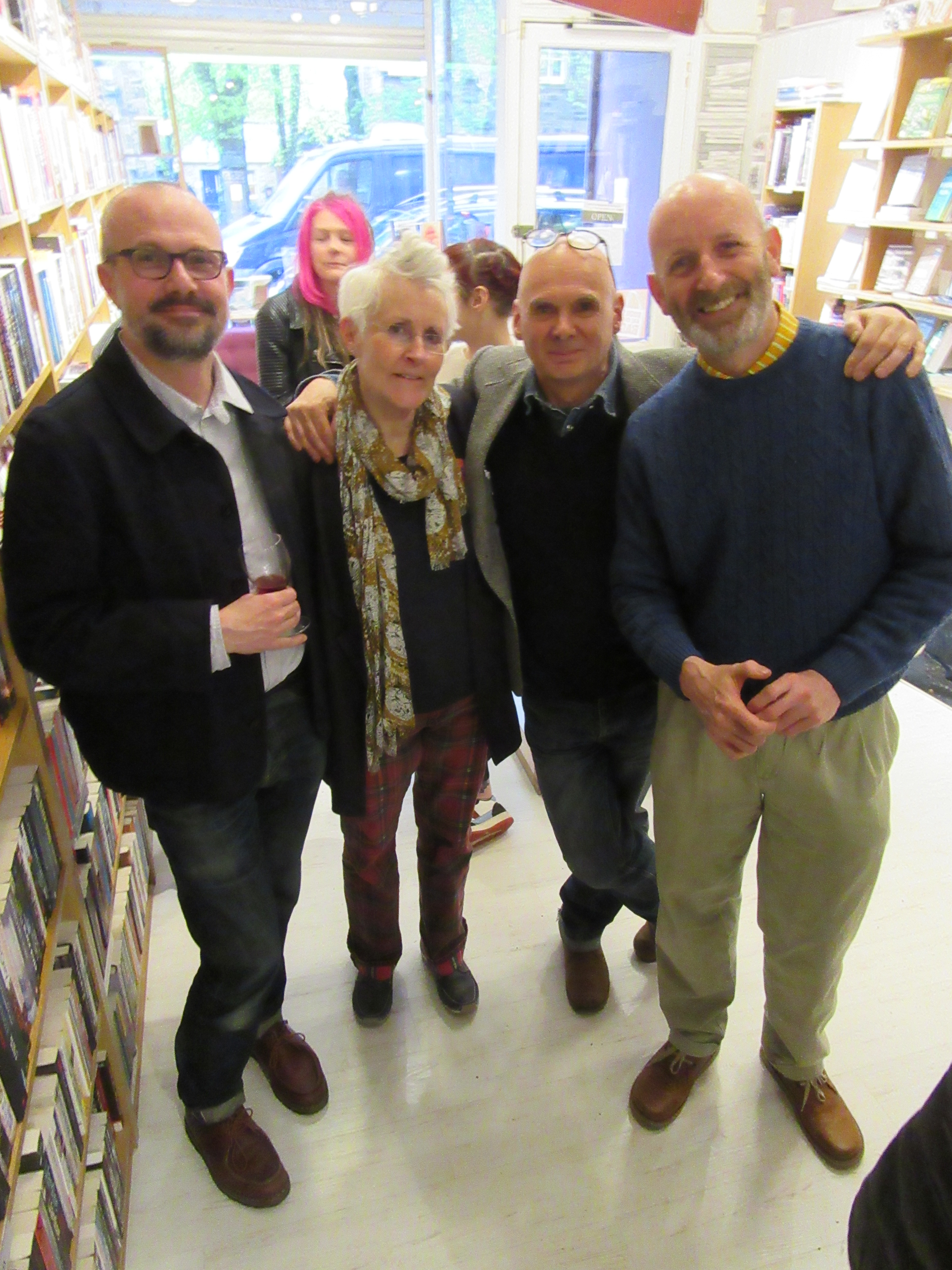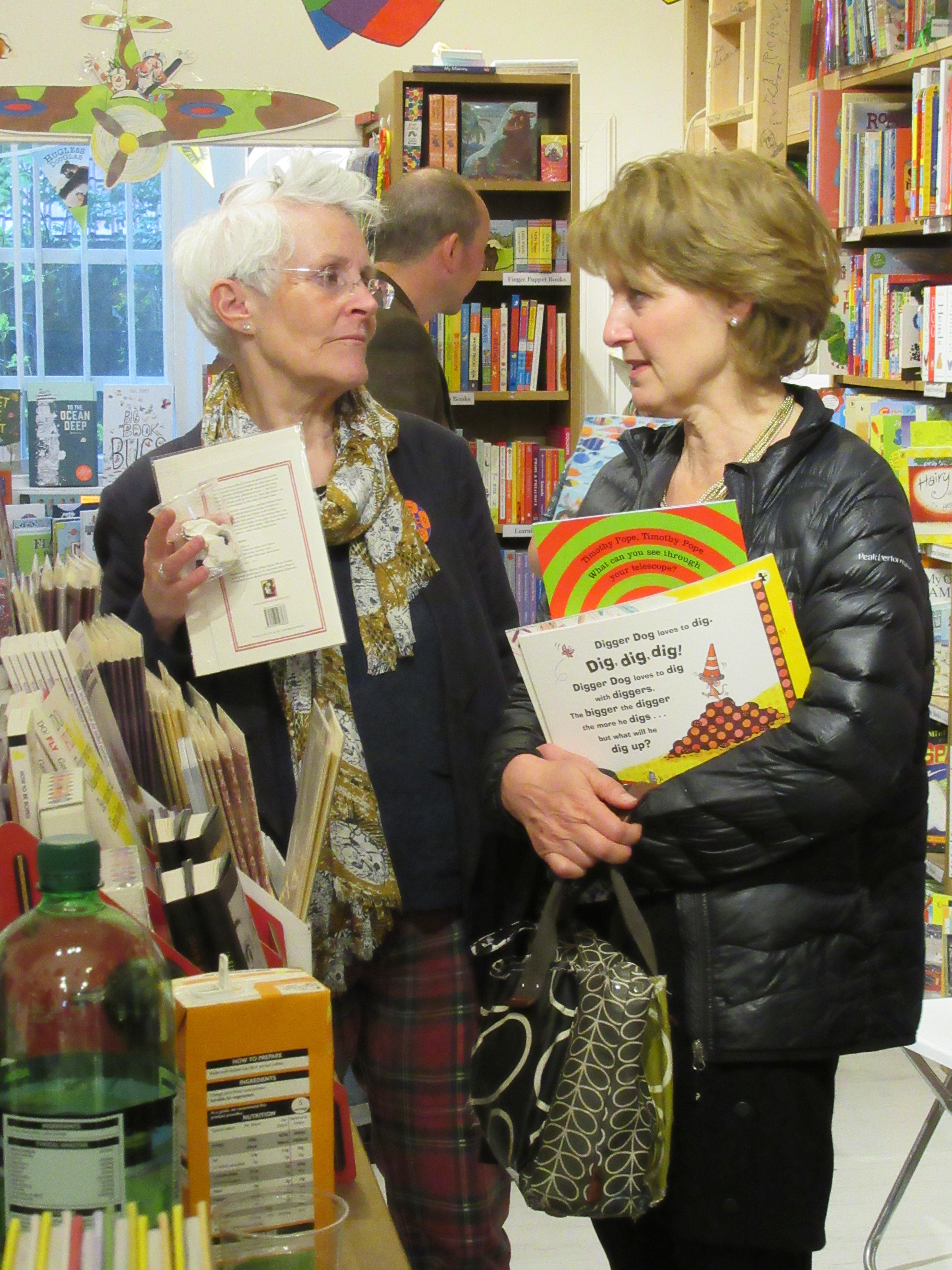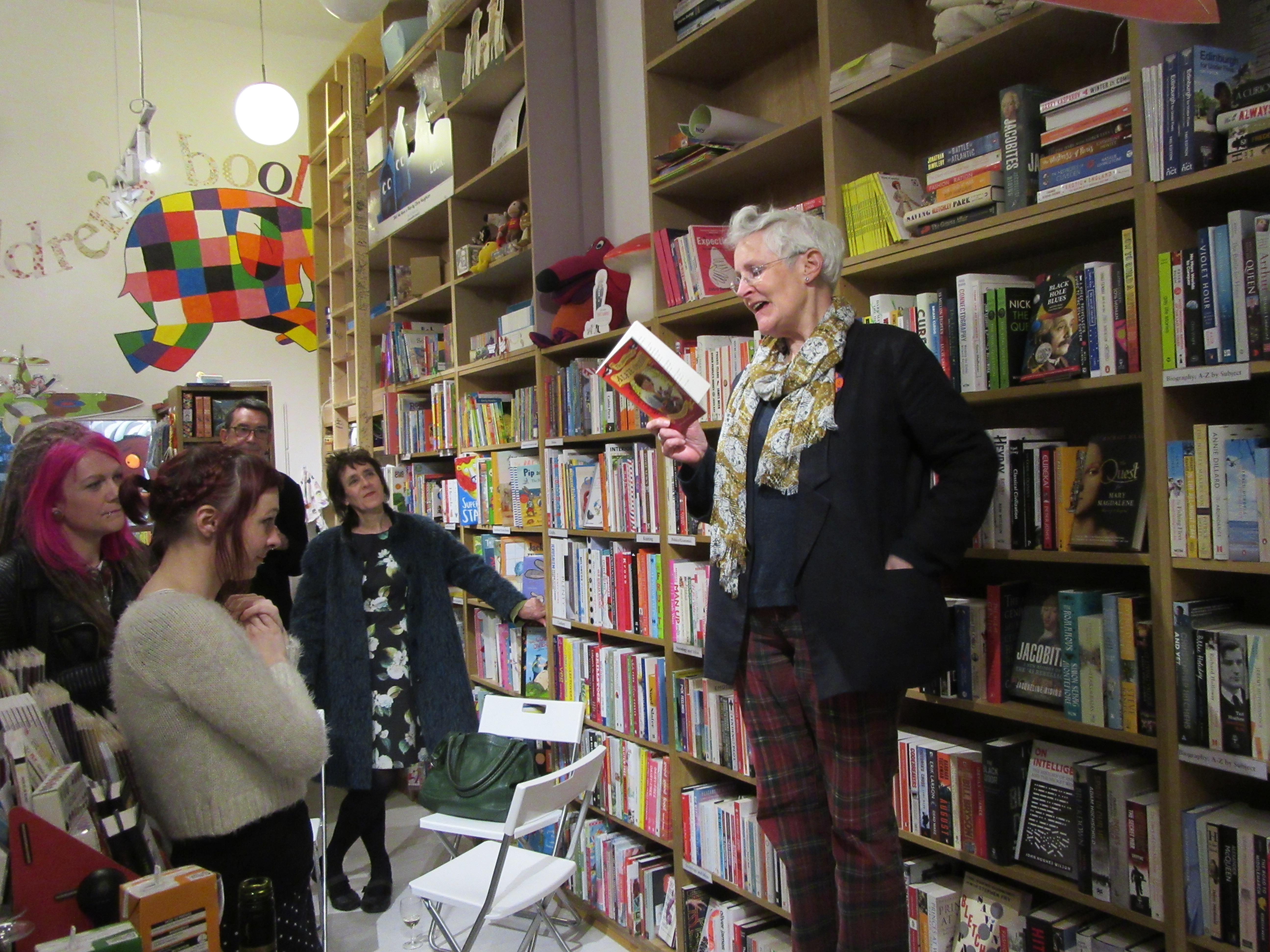A Teaching Fellow in Illustration has been awarded a prestigious Association of Illustrators (AOI) World Award for her recent street art project, “If These Walls Could Talk”. For the twentieth anniversary of Wigtown’s book festival, Astrid Jaekel decorated 11 buildings on the small town’s square with her illustrations.

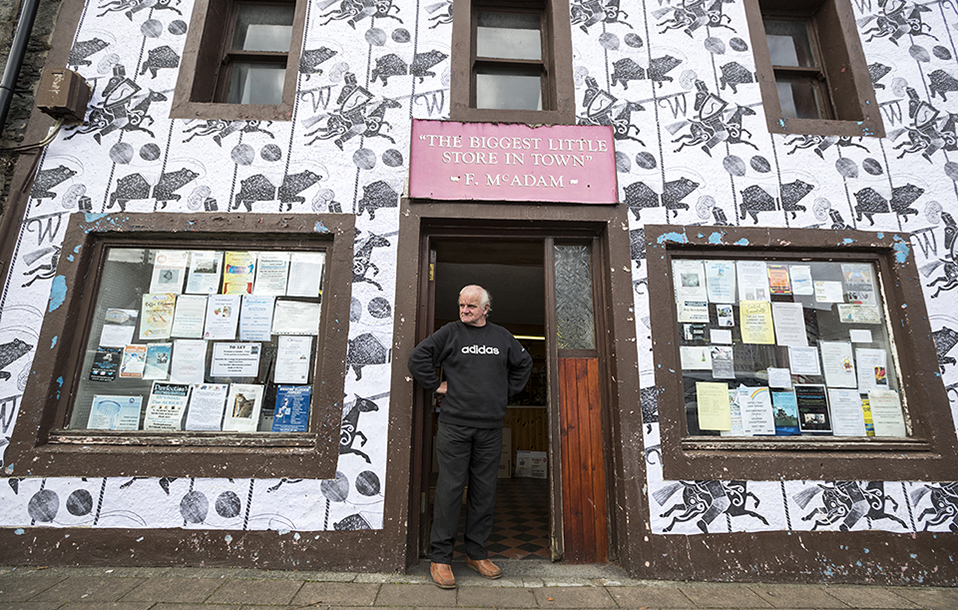
In the 1980s and into the 1990s, many businesses in Wigtown ceased to exist and the small south-west town declined. In 1997, however, it was awarded the status of Scotland’s National Book Town, which has, over time, helped to regenerate the local economy. Now, Wigtown’s many cafés and second-hand bookshops attract book lovers all year round.
Astrid began her project by going door to door around the town square in order to learn about the buildings and find residents who might like to “donate” their houses to be canvases for street art. The town embraced Astrid’s vision.
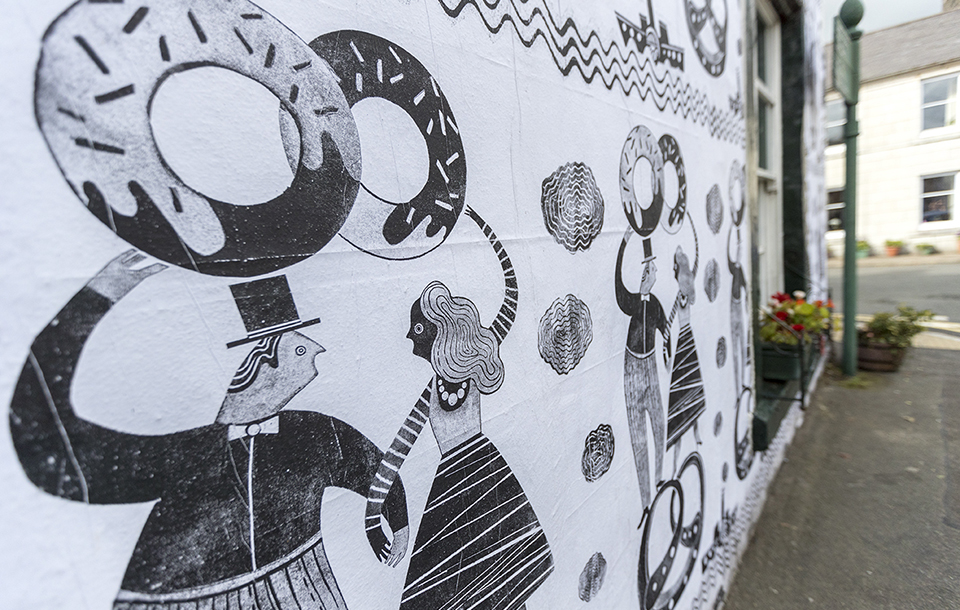
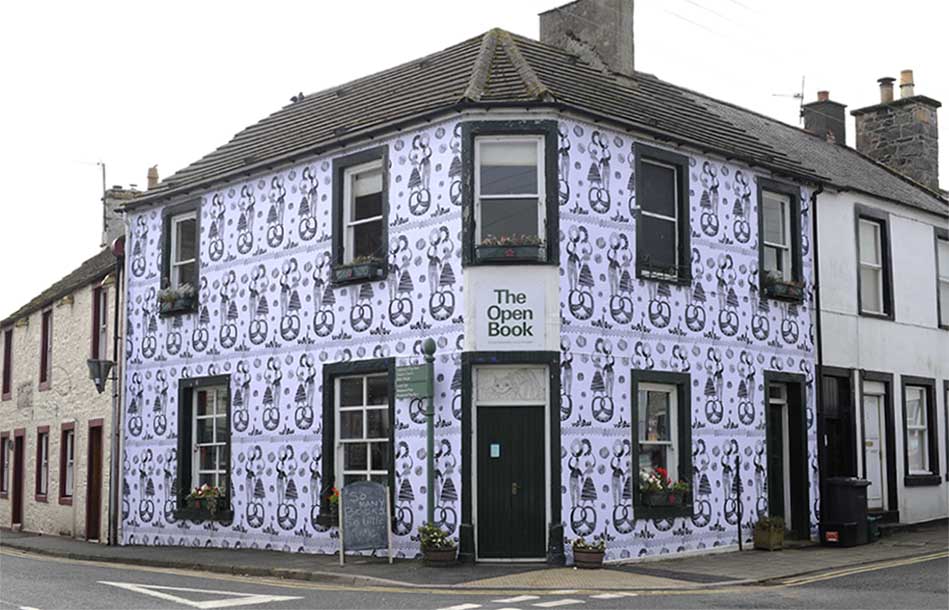
“I’d like to think that the project made the people of Wigtown feel proud of their town and gave them the chance to continue telling their stories.”
Astrid Jaekel
Many locals have played a major part in growing the book festival as volunteers, and “If These Walls Could Talk” was intended to shine a spotlight on Wigtown and its residents. The project was also meant to encourage visitors to mingle with locals, and to get the visitors to see the place as more than just a charming festival town.
“I’d like to think that the project made the people of Wigtown feel proud of their town and gave them the chance to continue telling their stories to the festival visitors,” said Astrid, “I believe that that’s exactly what street art should do. It should generate conversation and make people reflect upon their surroundings. It should connect people with one another.”
A project of this grandeur proved to require a few extra pair of hands. Astrid enlisted fellow artists as well as ECA graduates, including Irish street artist Joe Caslin.
One set back during the project was Storm Ali. It decided to pay Wigtown a visit just after Astrid installed the wallpapers and many sections were left in tatters or destroyed completely. Through resilience and dedication, though, Astrid and her team managed to repair the damage to produce an award-winning project that seamlessly unites storytelling, illustration and street art while capturing the essence of the small town.
All of the 200 shortlisted entries of the awards will be displayed at an exhibition at Somerset House in London 11 – 28 July, with in-depth presentations of each of the category winning projects.
To learn more about the exhibition, check out Somerset House’s website.
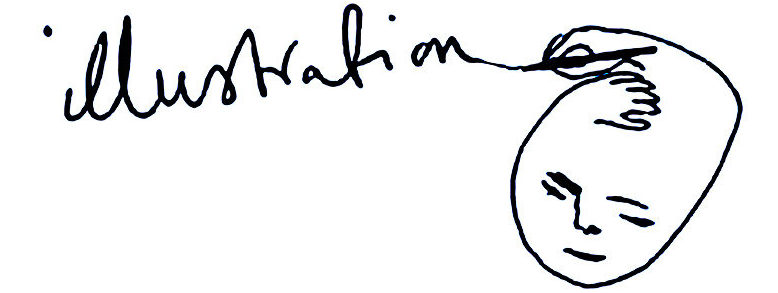













 Jonathan Gibbs
Jonathan Gibbs Emily Sutton
Emily Sutton Alise Tipse
Alise Tipse





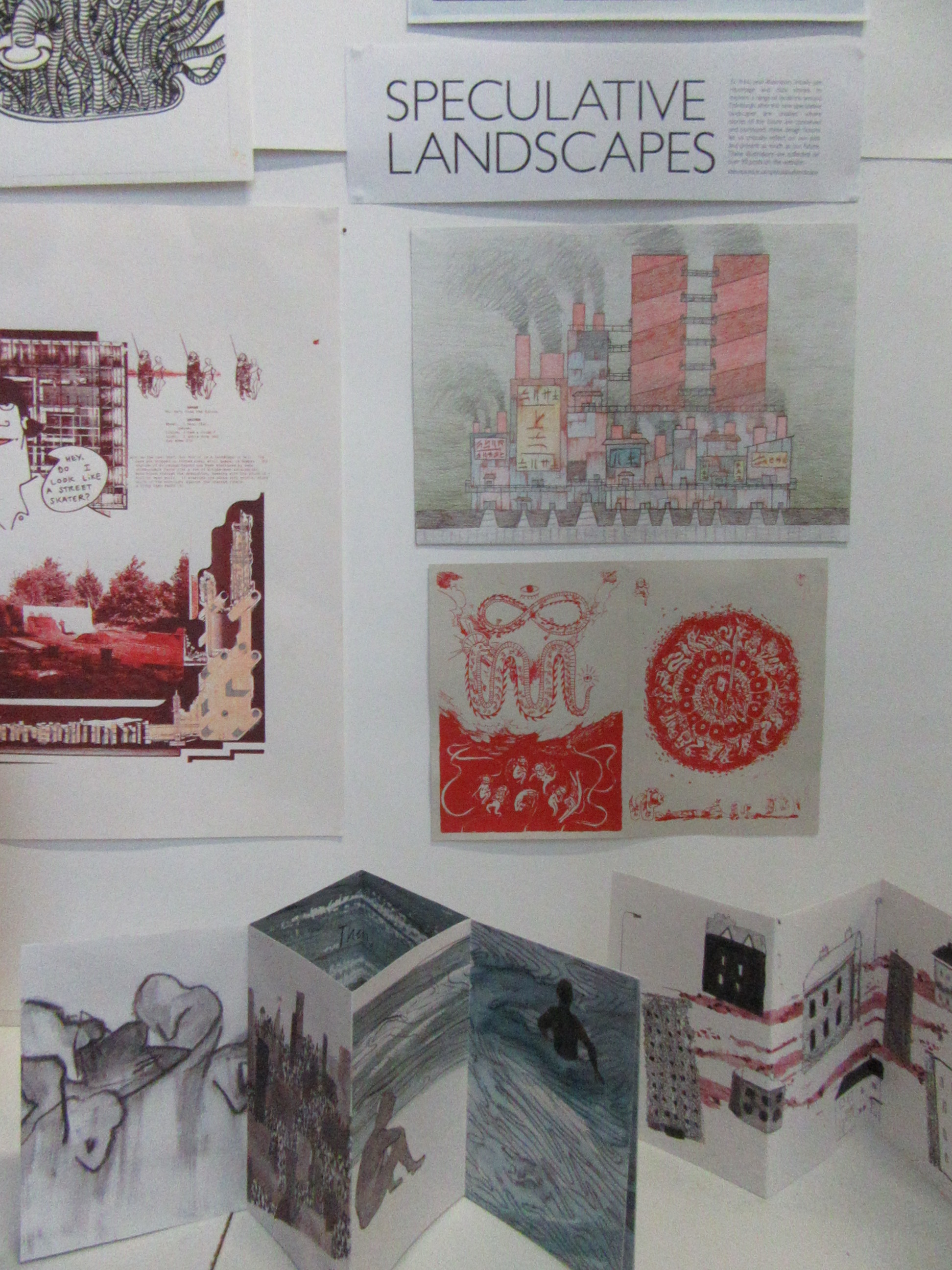
 Landscape-based work by 2nd and 3rd year students as part of the ‘Shaping the View’ exhibition
Landscape-based work by 2nd and 3rd year students as part of the ‘Shaping the View’ exhibition Roderick Mills, Paddy Molloy, Harvey Dingwall, Geoff Grandfield
Roderick Mills, Paddy Molloy, Harvey Dingwall, Geoff Grandfield Desdemona McCannon and Adrian Holmes
Desdemona McCannon and Adrian Holmes Jonathan Gibbs and Anne Howeson
Jonathan Gibbs and Anne Howeson
 Bianca Tschaikner on “Mapping imaginary Worlds’
Bianca Tschaikner on “Mapping imaginary Worlds’ Andrew Baker about ‘Landscape in Comics’
Andrew Baker about ‘Landscape in Comics’ Stephanie Black on the exploration of nostalgia and the contemporary Moon under Water through illustration
Stephanie Black on the exploration of nostalgia and the contemporary Moon under Water through illustration Angie Lewin on printmaking, collecting, and finding wildness in unexpected places
Angie Lewin on printmaking, collecting, and finding wildness in unexpected places A wonderful two days ended with drinks and joy in ECA’s Wee Red Bar
A wonderful two days ended with drinks and joy in ECA’s Wee Red Bar
